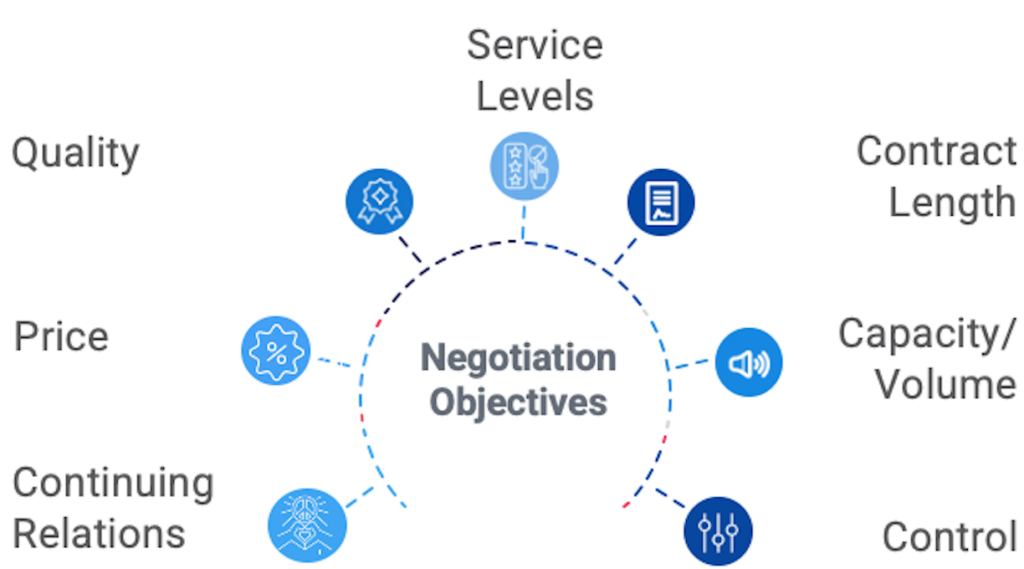Calculating the purchase price is just one aspect of the sourcing process. Apart from commodities and standard items, the ultimate cost is usually not just based on analyzing expenses and projected profits.
Before reaching a final agreement on the price and contract, it is necessary to negotiate and establish additional objectives as outlined below.
1. In order to manage this aspect efficiently, it is crucial for the buyer’s product design team to be involved in the negotiations. This team is accountable for having precise knowledge about the specifications and tolerances of the purchased materials and components. The conversation will revolve around determining the required cost and quality standards.
2. In most cases, agreement on a fair and reasonable price for the desired quality level is the negotiation’s focus. Analysis tools such as price, cost, and total cost analysis would be used in developing the final price.
3. This objective pertains to negotiations involving lead times, transportation, and packaging. Just like with quality, service levels can be adjusted or traded-off. For instance, concessions in price may be made to implement lean techniques or set up a program for supplier-managed inventory.
4. Buyers often negotiate prices for critical items to ensure that they meet the required specifications. To achieve this, they may use special testing equipment, statistical process and quality control methods, employ highly trained workers, limit the amount of outsourcing by suppliers, use special processing equipment, and maintain ongoing status reporting.
5. Discussions regarding this goal center on the constraints that suppliers may face in their production or service provision due to anticipated shifts in the market. Typically, increased prices are swapped for promised levels of supplier capability.
6. Buyers often try to secure advantageous prices for a specific duration, depending on market conditions or the cost volatility of the items they intend to purchase. However, hedging prices can cause disagreements. Suppliers may decline a longer contract due to expected production cost fluctuations, while others may prefer a longer contract to ensure the buyer’s commitment.
7. Negotiations should aim for a mutually beneficial atmosphere, where both parties recognize the importance of each other’s long-term success as a key focus of the negotiation. Building a close relationship is the ultimate goal.

